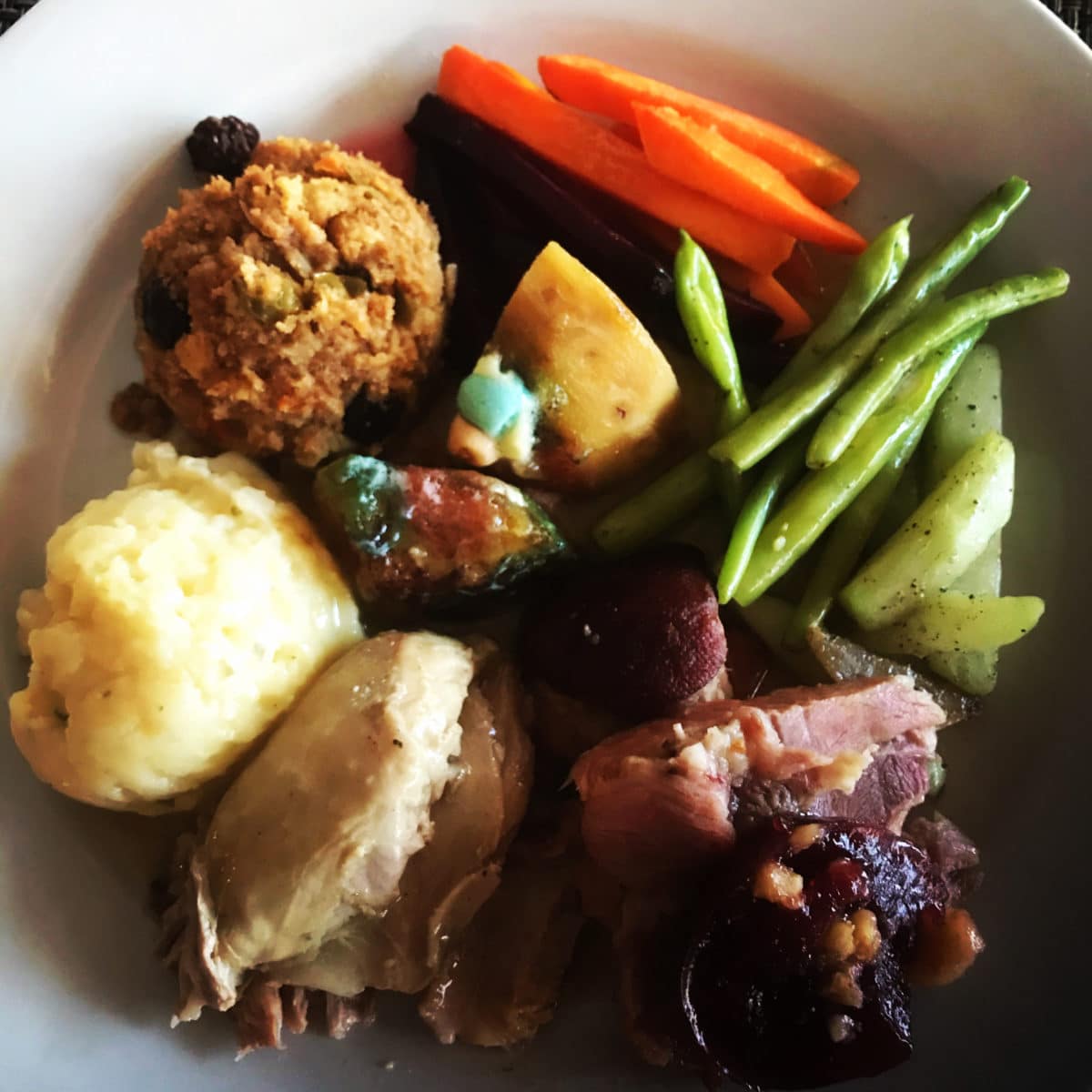As we sat at the bar outside our home in Mosquitoville, a little neighborhood in San Ignacio, Belize, my husband, Jim, looked up at the stars and sighed, “Wouldn’t it be wonderful if we could have just one hour in the H-E-B?” The big Texas supermarket chain was our go-to when we lived in Austin, the place we found anything and everything, all the good things to eat and drink whenever we wanted it.
We each had our own list of what we would buy in our fantasy shopping spree and rattled them off. Juicy red tomatoes, craft beer and big Pennsylvania Dutch hard pretzels. Peaches, good wine, fine cheeses and more than five kinds. After three years of living in Belize, we still have moments when we say, “What are we making for supper? There’s nothing to eat in the house.” Followed by, “Well, there’s nothing in the supermarket, either!” and our raucous laughter.
Those moments, as well as the food fantasies are fading in number and frequency, replaced by days tromping through the jungle learning what can be plucked from the trees to serve at lunch or watching the Maya women flip corn tortillas on their comal over the fogon at the corner shop. While there’s so much we can’t get here, we’re quickly learning that we didn’t need it anyway. We’ve quite happily gone from “Oh, how I miss that” to “We’ll just eat this instead!”
Setting up the kitchen
Our 450 square foot cement house is nestled in a valley behind the Cahal Pech Mayan ruin. There are sure to be ancient artifacts under the 25 or so homes painted bright orange, green and turquoise. We’re about as far west from the coast as you can get in this small country of about 400,000, an 8 mile drive to the Guatemalan border. During the day, kids ride their bikes on the bumpy dirt roads and flocks of squawking White Fronted Parrots fly over our yard in pairs. We wonder if our own Yellow Naped Amazon who came with us from Austin speaks their language. The men are all building extra rooms off their own cement homes while the women hang up their laundry on the line to dry. In our house, it’s the man who does that, a topic of much discussion, I’m sure, among the rest of the Mosquitoville families who are mostly Mestizo.

When we moved into this house, there was no electricity in the kitchen and until Jim installed it, we used a hot plate to make rice and beans and perk our coffee in an old stainless steel pot in the living room. Now, we have a small four-burner oven fueled by butane, an Instant Pot and what my husband thinks is the greatest toaster ever invented, a metal disc with holes to place atop the burner flame and four wire racks to lay the bread on.
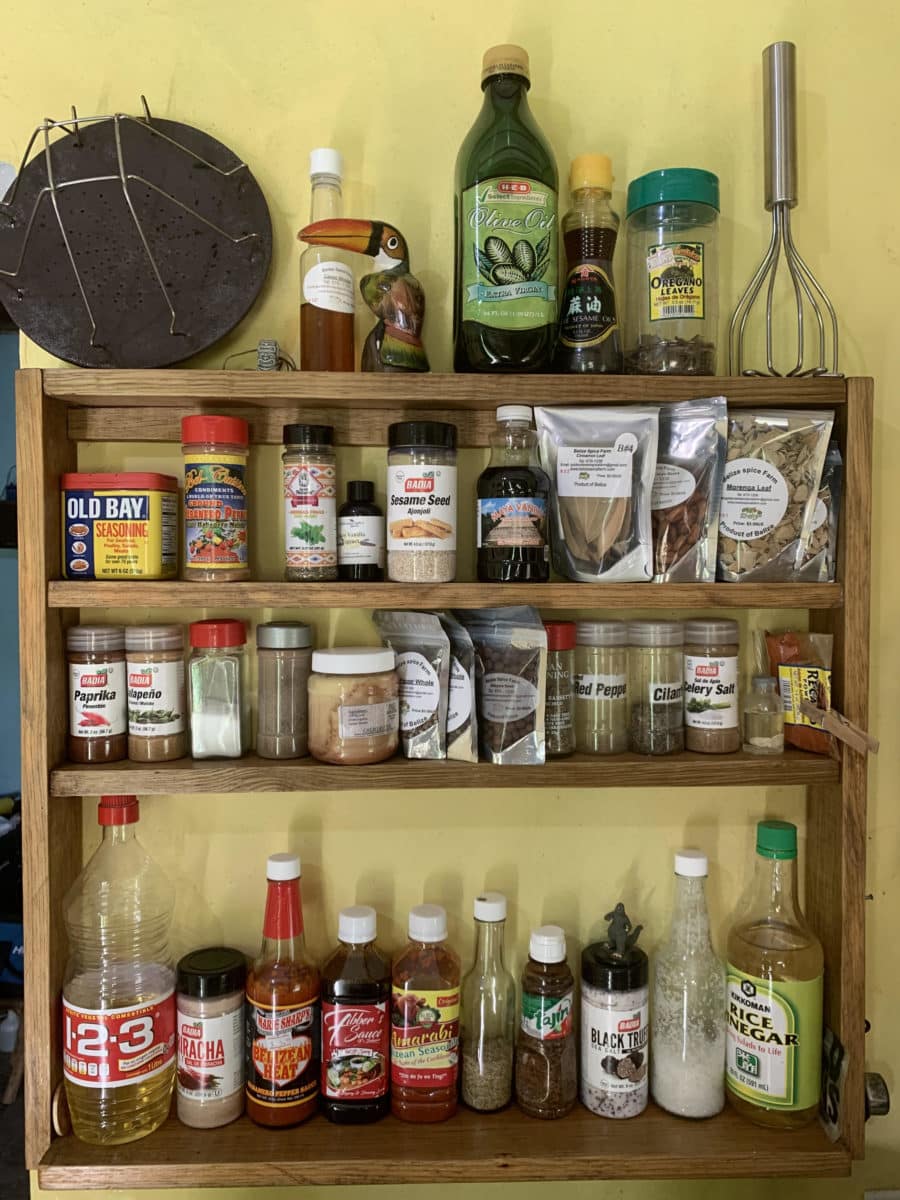
If I nag enough, or perhaps sweet talk instead, I may finally convince Jim to build us an outdoor oven complete with fogon like our friends Marge and Tom have on their Moonracer Farm in the Mountain Pine Ridge, a harrowing 45 minute drive away. It’s the Central American equivalent of the American outdoor gas grill, and just as popular as a gathering place for a great meal.
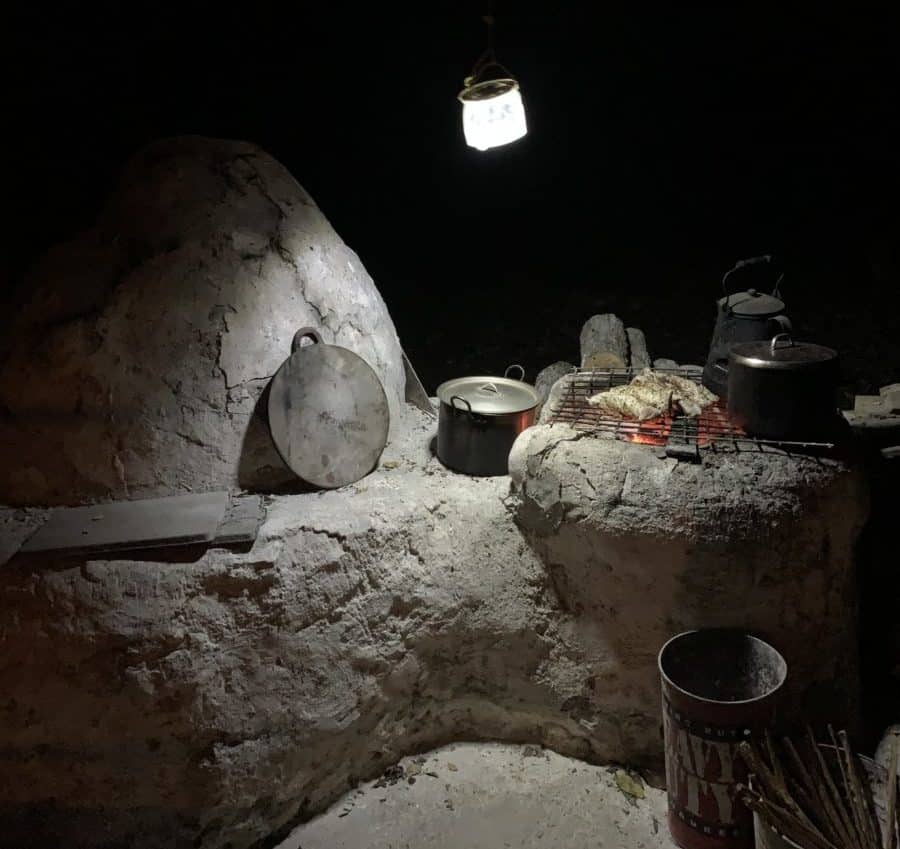
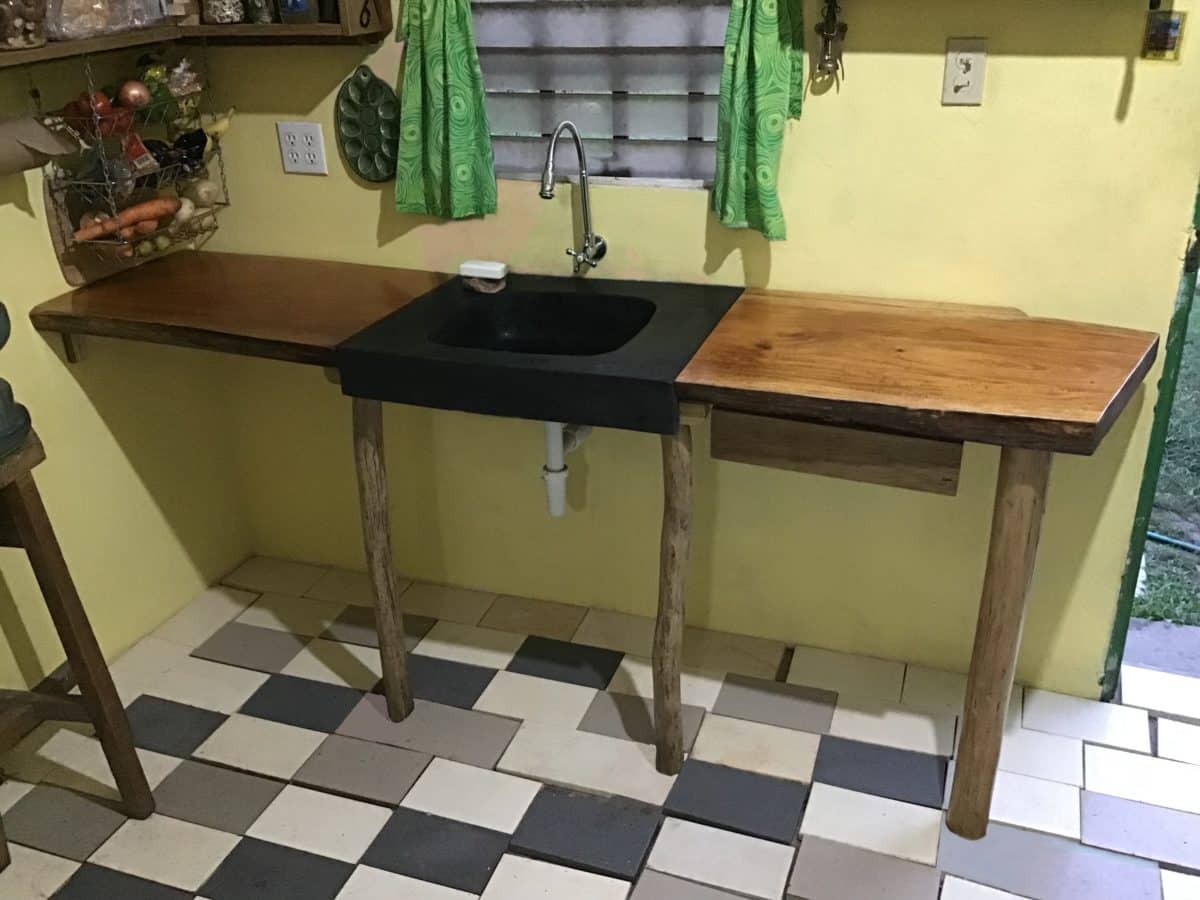
What we do have is a beautiful live edge kitchen counter Jim made from sak chée chem, or white poisonwood, with an embedded cement sink dyed black. That’s not anything you would ever find at the local home improvement center, and yet it’s just the improvement our home needed. It is functional and elegant in its simplicity at the same time.
The art of food shopping
I wasn’t kidding about the supermarkets. While there are many here, there’s just not much in them. Most of the supermarkets here are owned by Chinese and Taiwanese families lured to the country through an economic citizenship program and by just a few families in each town, so we find the same products on the shelves in each one with little anomalies here and there.
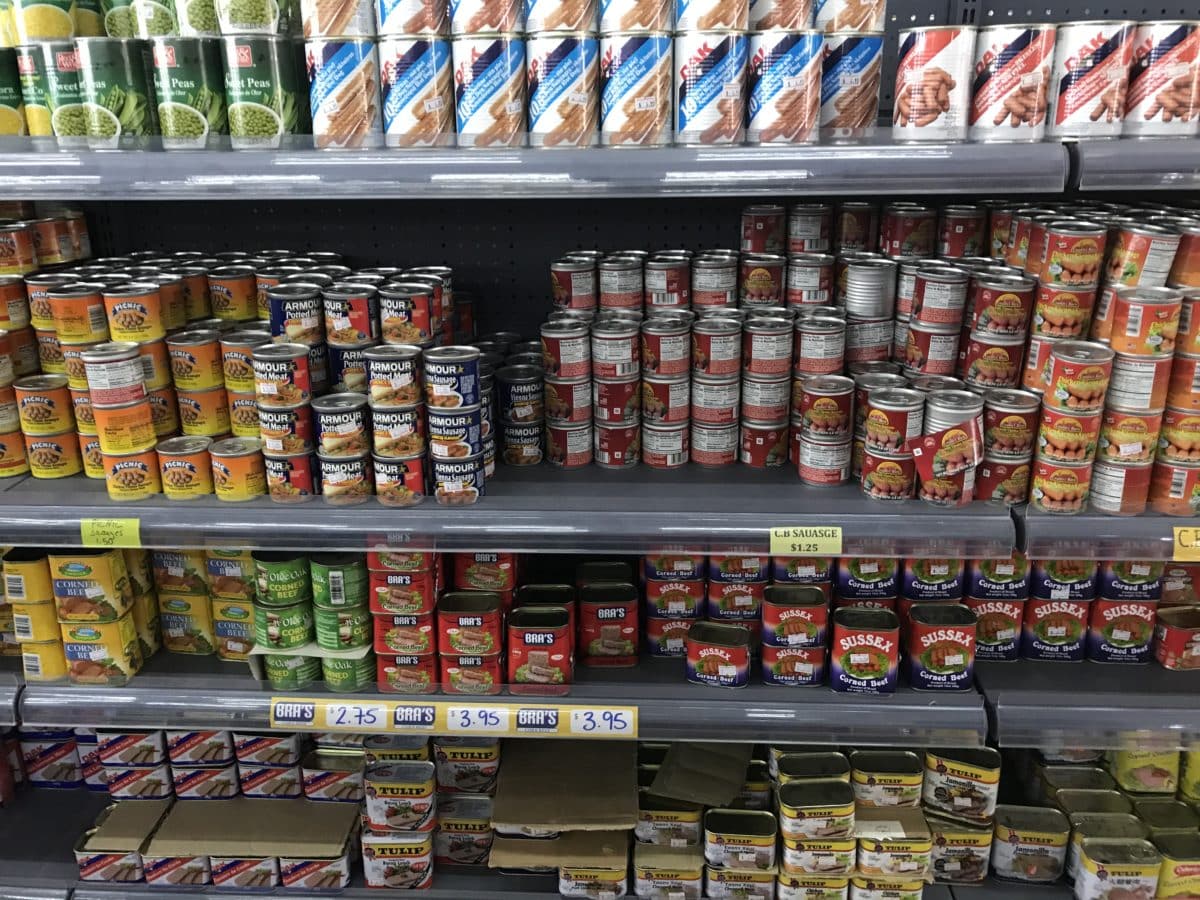
Once in a while I’ll find something rare like prepared horseradish and I now know to snap it up because I might never find it again. There have been afternoons when we’ve hit three stores on one trip because we’ve forgotten which has the good butter and which one carries the coffee we like.
It’s in these stores where we find imported items like a bag of Lay’s potato chips or rare jars of Kalamata olives for which we pay imported goods prices. While we’re tempted, we usually opt for the Belizean snack food like salty plantain chips or peanuts grown and roasted in San Antonio, a Maya village nearby. We’ll also get staples like dried beans, rice and Casera, the little cans of salsa we use in just about every Instant Pot full of those beans or chickpeas. The supermarket is also where we get our Belikin beer or stout, one of only about ten types of beer available, mostly from the Caribbean. Oh, and Hobbs Brewing Company Wildcat IPA or Hummingbird Pale. Strangely, this New Hampshire craft brewery has also set up shop in Placencia, becoming the only craft brewery in the country.
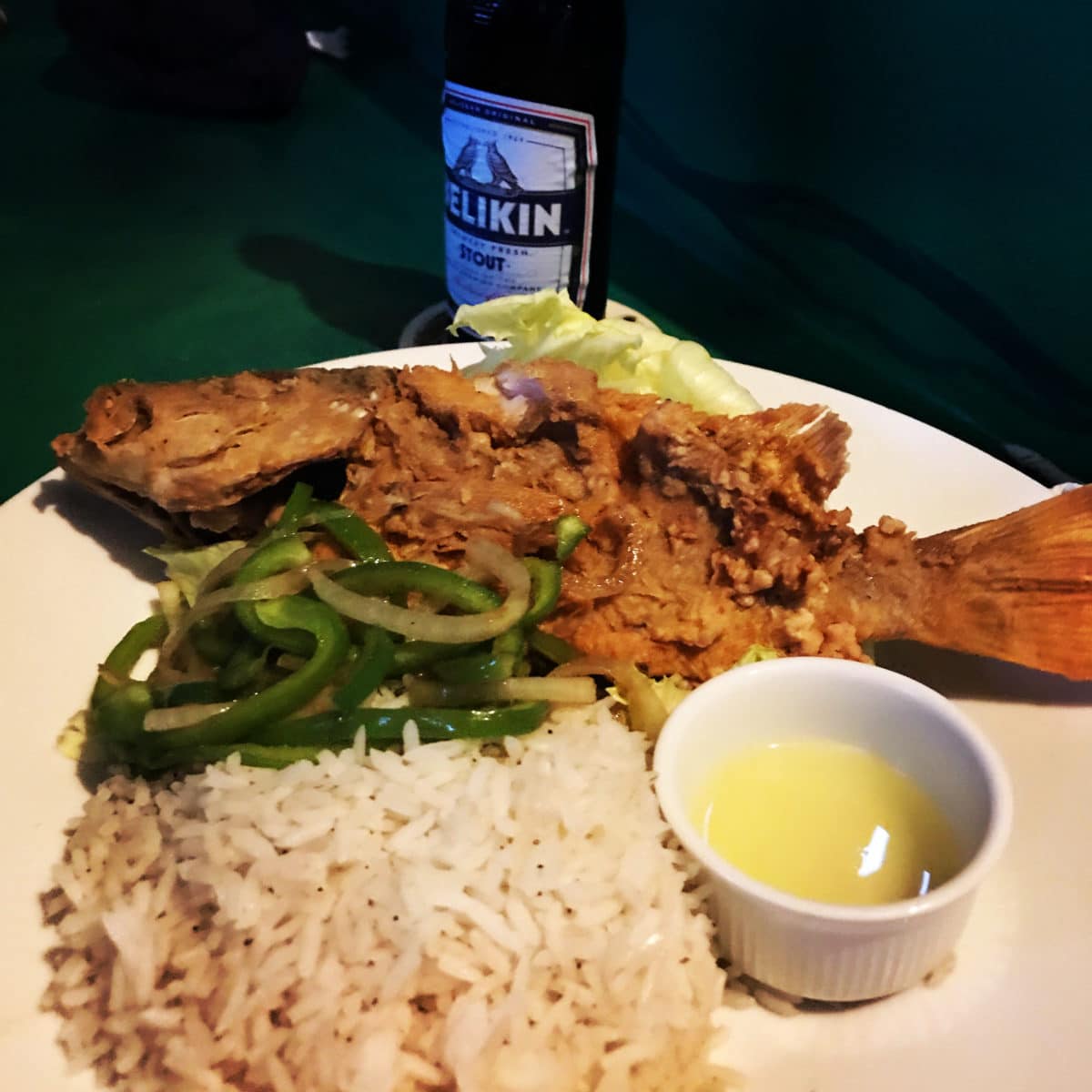
We have red beans cooked with annata with a side of grilled plantain and plenty of hot sauce or stewed chicken or red snapper in a lime and butter sauce with rice dotted with cilantro for dinner and for breakfast, fry jacks drizzled with local honey and scrambled eggs with chaya.
Only in season
Most of our meal shopping is done at the daily farmers market in San Ignacio where they sell fruits, vegetables, meat, fish, lobster in season and clothing. The Mennonites from nearby Spanish Lookout sell Farmers’ Cheese, butter and yogurt and milk.
Legally, the farmers and fishermen are only allowed to harvest and sell products when they are in season, so when the avocados show up at the market, I do a happy dance and scoop them up every day. The first year we lived here here exposed me to some new fruit or vegetable every week. I’d hold it up and ask what it is and how to use the green plums, chaya or callaloo and get different names in Maya or Spanish.
It’s also at the market where I find locally made wine. Like the beer situation, good wine is hard to find.
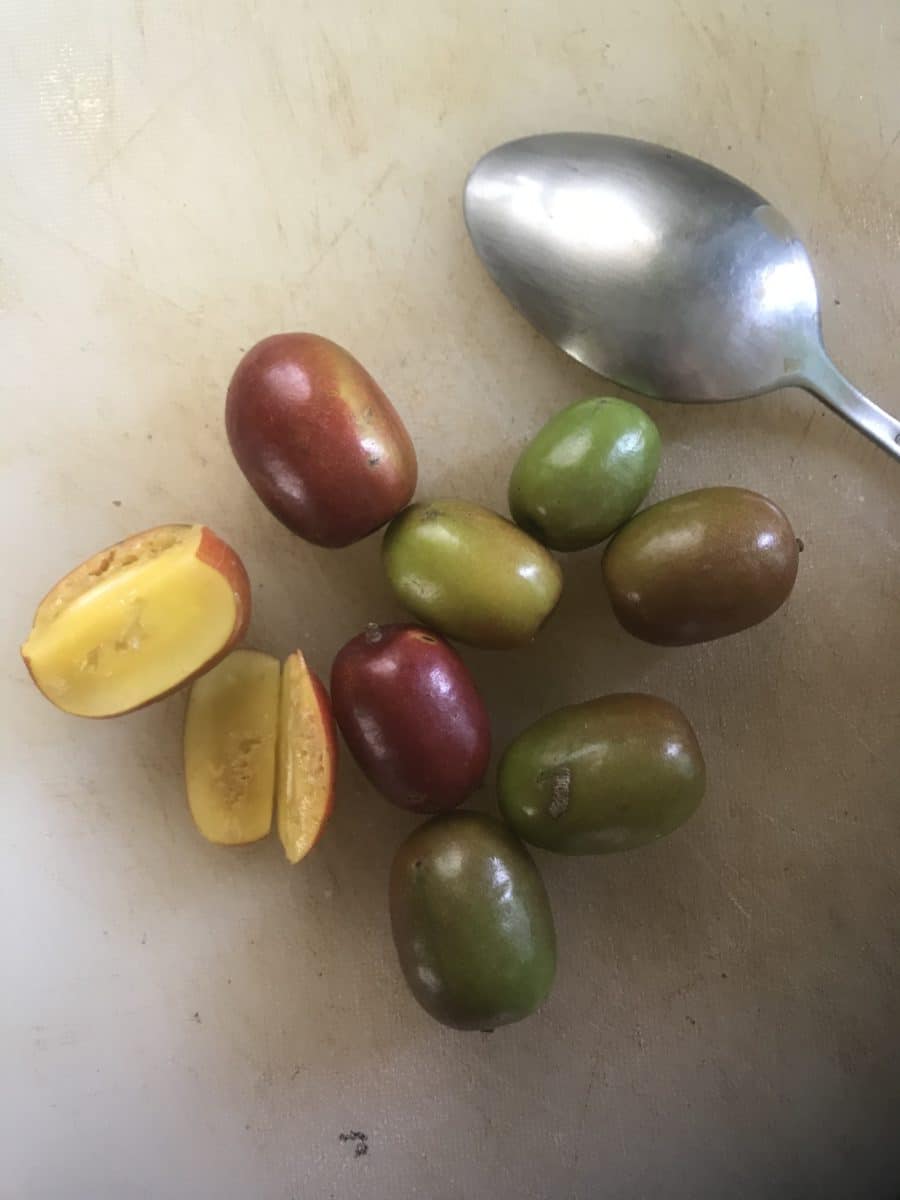
It’s mostly imported from Argentina, Chile or Mexico but I can find American name brands like Barefoot, just at twice the price. Now I drink wine made from sorrel, which we call hibiscus, rice, berries and even plantain and friends experiment with anything growing on their farms.
We also get deliveries of artisan products like bread, prepared smoked ham, juices and fresh local eggs through Mobile Market, which uses some of the proceeds to help foster kids and every day, scooters come through the neighborhood beeping their horns shouting out, “Tamales!” “Fish!” “Pork!” At one point a truck came through handing out live chickens and my nutty husband decided we needed one.
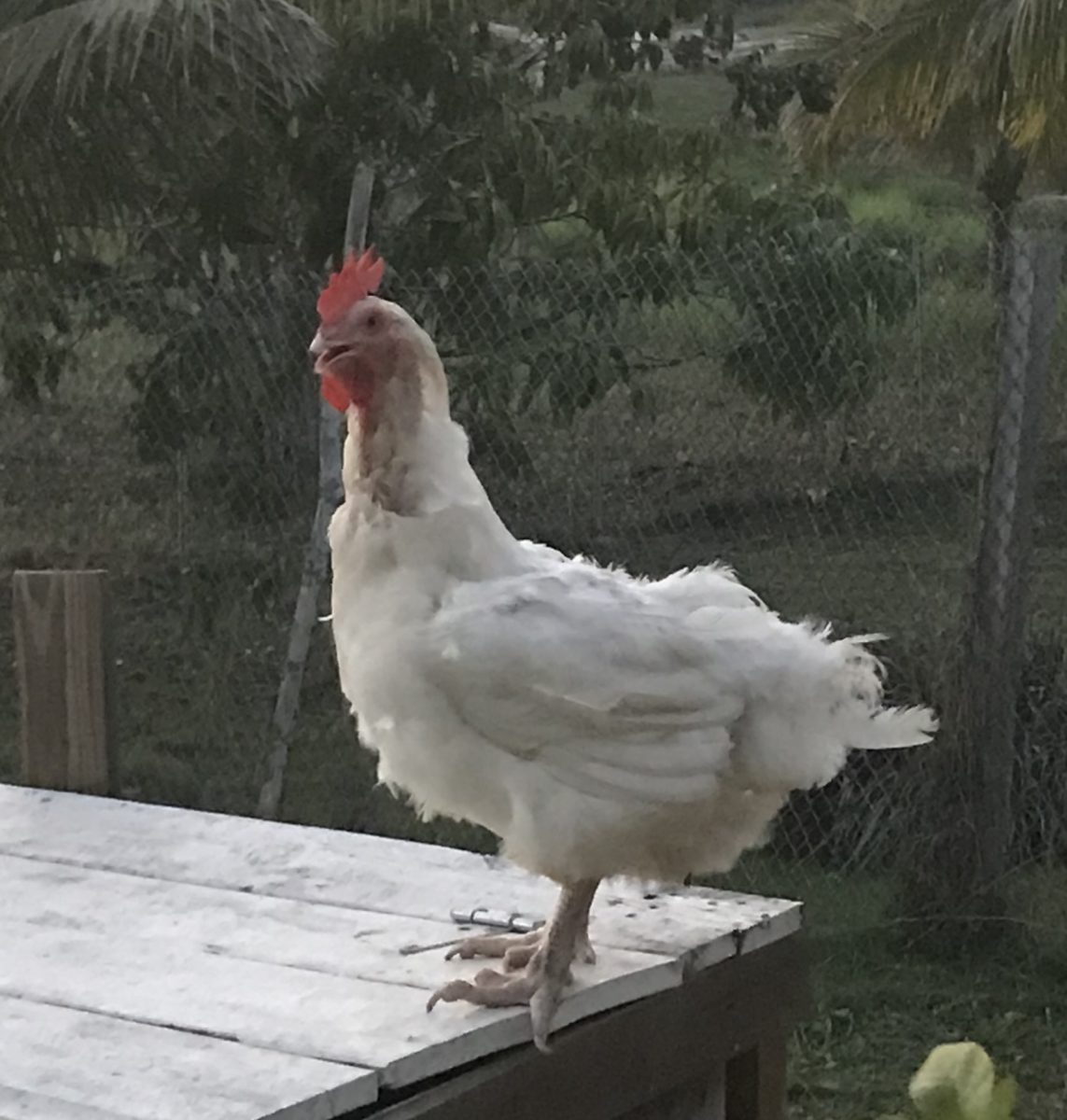
It eventually went to the neighbor who I’m sure made a delicious caldo de pollo which begins with a backyard chicken sauteed in garlic and spices, including the Belizean staple annatto. Cilantro, hot habanero powder and local vegetables like cassava root might be added, all served with corn tortillas.
There’s also foraging to tackle. Belizeans, especially the Maya, could put those “Survival” reality show contestants to shame, easily living off what they find in the jungle. On one of our first foraging forays, our friend Julio harvested a few long green and white pods from the forest floor nearby the trail, slicing one open lengthwise to show us a feathery packet of dark green stamens. “This is picaya palm. Try it.” I tasted one of the bitter bumpy inner strands and winced a bit, but Julio assured me that they mellow out when this delicacy found primarily in Guatemala and El Salvador is simply sauteed or battered and deep fried and that evening we enjoyed them in a stir fry, the flavor almost like an artichoke, a taste I haven’t experienced in years.
Exploring the cultural landscapes
My new diet is full of these little surprises, not only gems from the jungle or the seasonal ingredients but discovering new spices, dishes and traditions. Belize is home to many cultures and ethnic groups including Mestizos from all over Central America who bring dishes from Honduras, El Salvador and Guatemala in a combination of Spanish and Maya dishes. The second most prevalent group are the Maya, primarily Yucatec Maya where we live. From them I’m learning how to cook with corn, chiles and chicken in stews and the tender cochinita pibil, made with pork buried underground.
While all groups live throughout the country, the Kriol and Garifuna live mostly in the coastal states and bring their Caribbean traditions to the table including staples like cassava, banana and fish in dishes like Sere, a coconut and fish soup with okra and cilantro or jerk chicken. The East Indians brought turmeric when they came as indentured workers in the 1800s and it now grows wild here, offered in big baskets in the market.
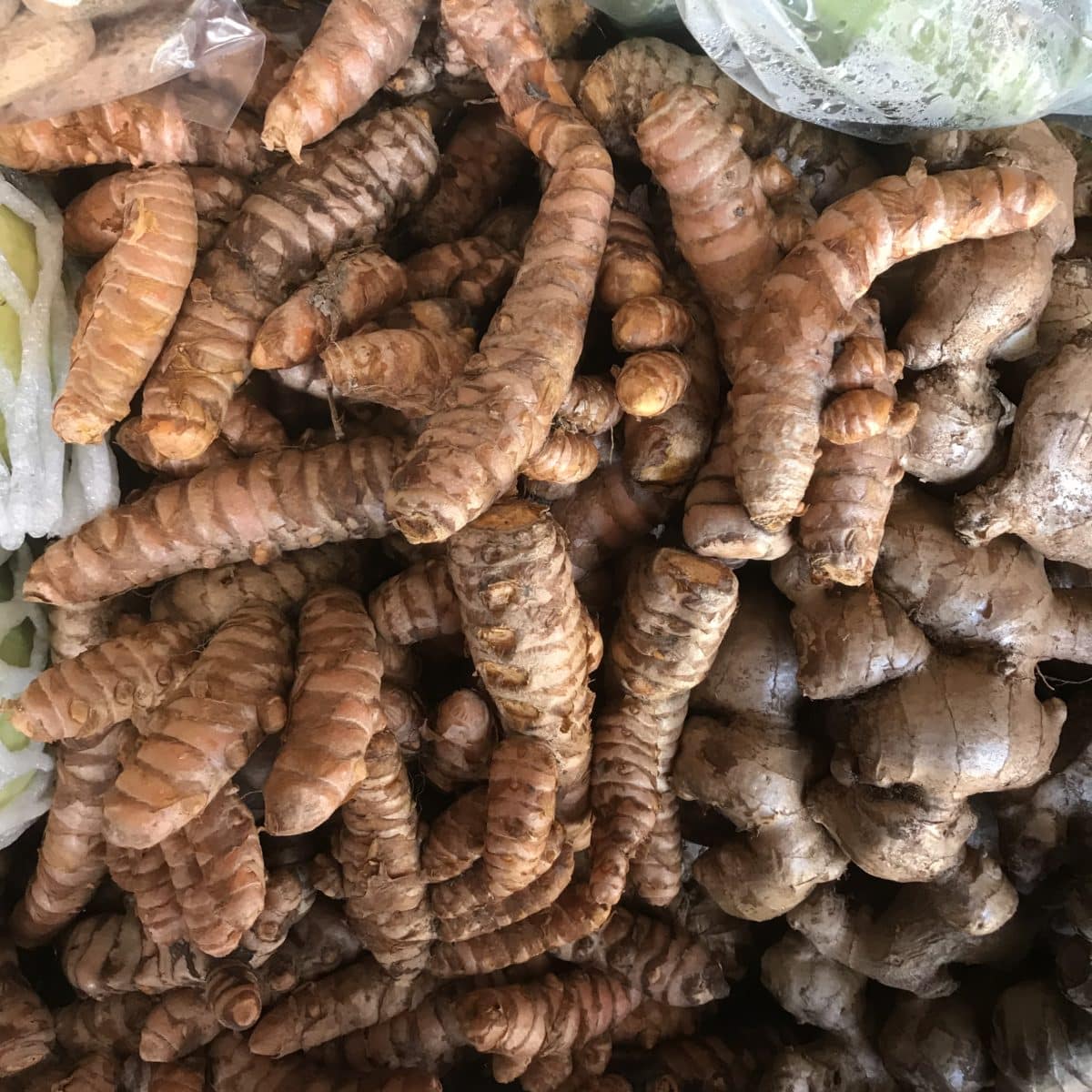
All of that has become part of my own breakfast, lunch and dinner fare, and I make dishes that honor the cultures I’m learning more about each day rather than pine away for what I miss.
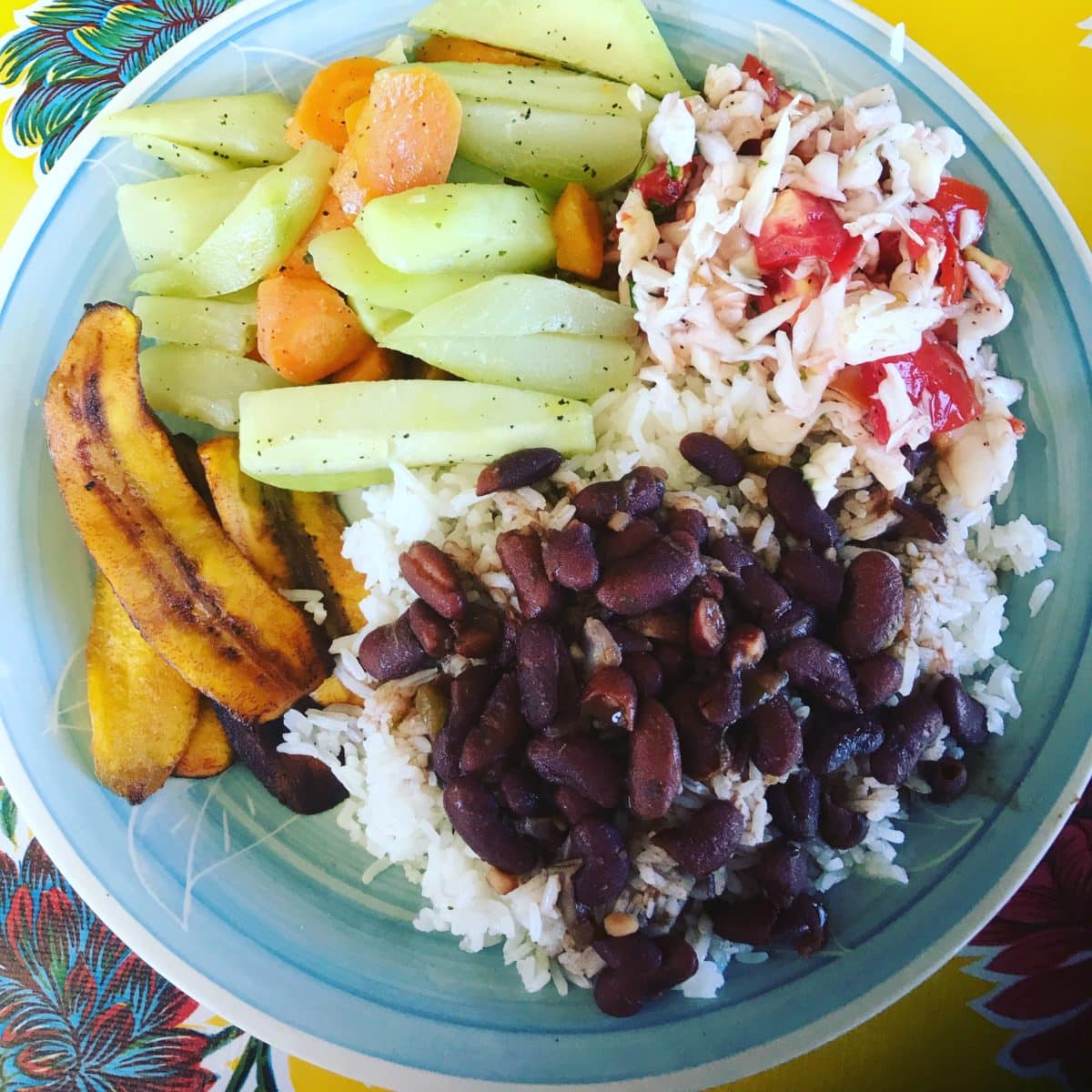

We have red beans cooked with annata with a side of grilled plantain and plenty of hot sauce or stewed chicken or red snapper in a lime and butter sauce with rice dotted with cilantro for dinner and for breakfast, fry jacks drizzled with local honey and scrambled eggs with chaya.
Soon, I may even make my own corn tortillas if I can get the ladies in the corner tortilla shack to give me a lesson.
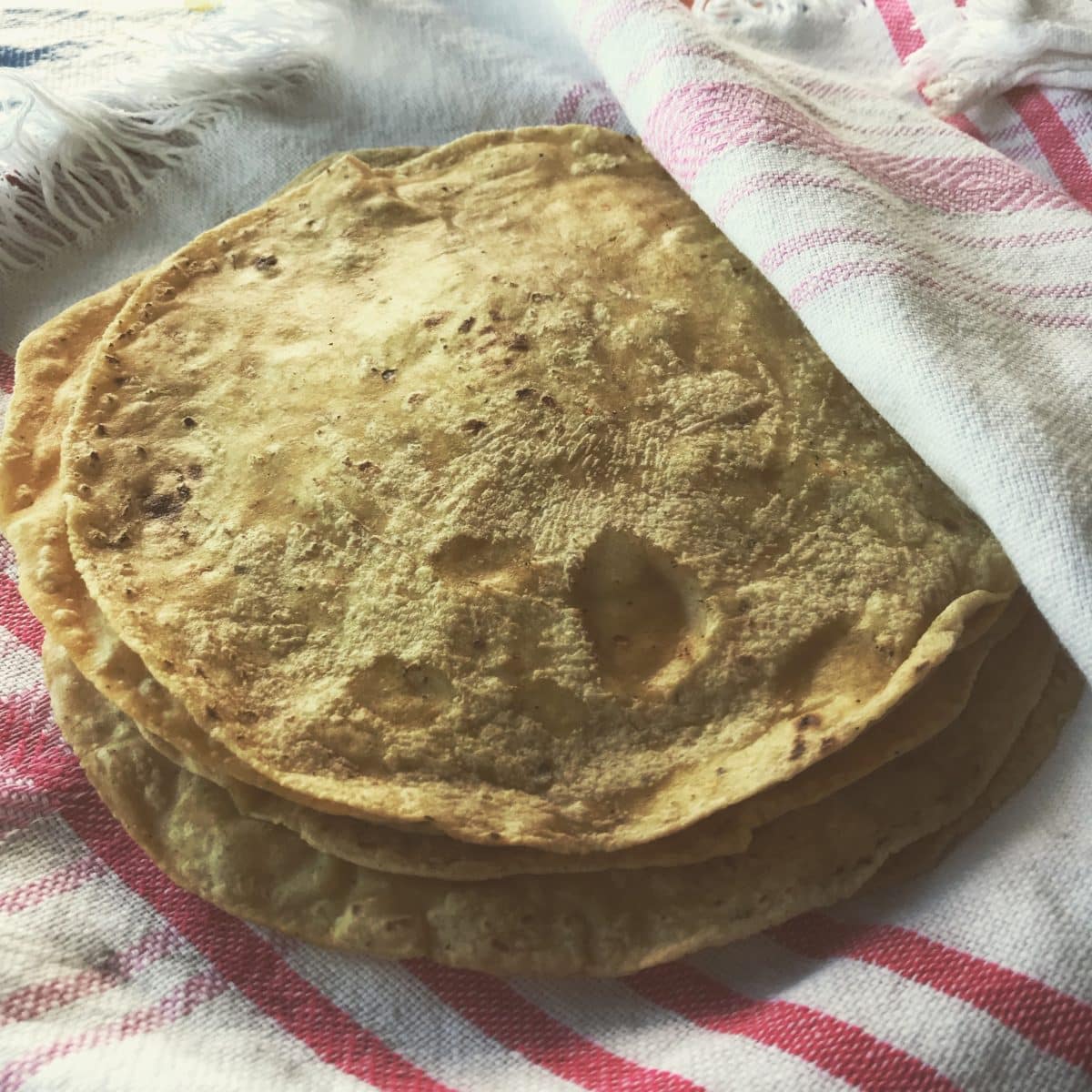
Trip to the H-E-B? Nah. I really don’t miss a thing.

![]()
